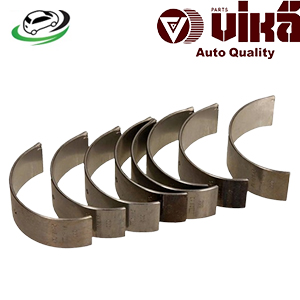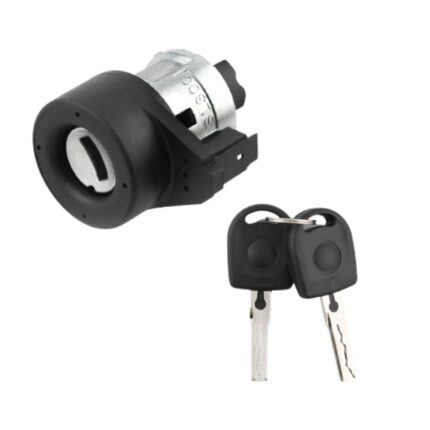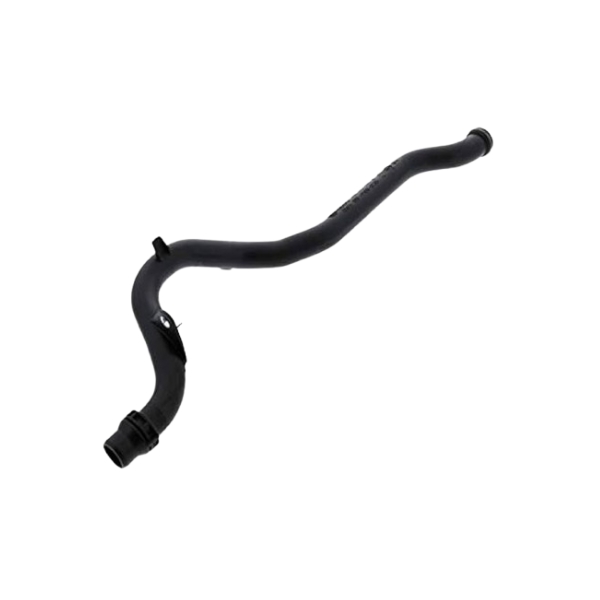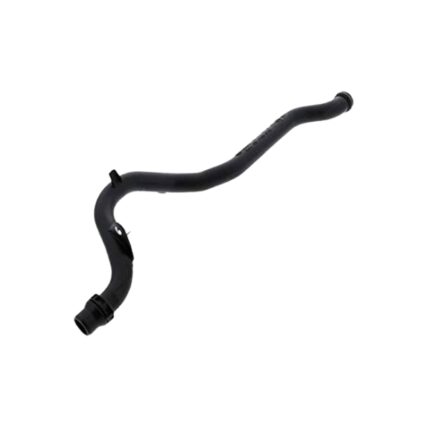Get AUDI A7 C7 3.0T Coolant Pipe 06E121065N in Kenya
The coolant pipe is an essential component in the engine’s cooling system, designed to transport engine coolant throughout the system to regulate temperature. Proper cooling is vital for maintaining engine performance and longevity, as overheating can lead to severe damage to engine components. The coolant pipe is one of several parts that work together to ensure the engine maintains an optimal operating temperature.
Coolant pipes typically carry a mixture of water and antifreeze, which absorbs heat from the engine and disperses it through the radiator. The coolant then recirculates to repeat the process. Over time, as engines have become more powerful and efficient, the role of coolant pipes has become even more critical in managing the increased heat generated by high-performance and modern engines.
2. What is a Coolant Pipe?
A coolant pipe is essentially a conduit that carries coolant from one part of the engine’s cooling system to another. These pipes can be made from various materials, including rubber, plastic, or metal, depending on the vehicle’s design and the location of the pipe within the cooling system.
Coolant pipes often connect to key parts of the cooling system, including:
- Radiator: The radiator dissipates heat from the coolant into the air.
- Thermostat: This device regulates the flow of coolant based on engine temperature, ensuring the engine warms up quickly and doesn’t overheat.
- Water Pump: The water pump moves coolant through the system, ensuring efficient heat transfer.
- Heater Core: The heater core uses engine heat to warm the interior of the vehicle, and the coolant pipe delivers heated coolant to it.
In some vehicles, especially those with turbocharged engines, additional coolant pipes may cool specific components like the turbocharger, ensuring it doesn’t overheat during operation.
3. Types of Coolant Pipes
There are several types of coolant pipes found in vehicles, each designed for specific purposes within the cooling system:
- Radiator Hose (Upper and Lower): These large-diameter hoses carry coolant to and from the radiator. The upper radiator hose typically carries hot coolant from the engine to the radiator, while the lower hose returns the cooled fluid back to the engine.
- Heater Core Hoses: These smaller hoses deliver hot coolant to the heater core and return the cooler fluid to the system. They enable the vehicle’s heating system to function by using the engine’s heat.
- Bypass Hose: This hose allows coolant to bypass the thermostat and flow directly to the water pump, ensuring that coolant circulates even when the thermostat is closed (usually during warm-up).
- Turbocharger Coolant Pipes: In vehicles equipped with a turbocharger, specific coolant pipes are used to cool the turbo and prevent overheating, as turbochargers generate significant amounts of heat during operation.
- Transmission Cooler Lines: In some vehicles, especially those with automatic transmissions, coolant pipes may also be routed through the transmission cooler to help keep transmission fluid temperatures in check.
4. The Function of the Coolant Pipe
The primary function of the coolant pipe is to circulate coolant throughout the engine’s cooling system to manage engine temperature. This circulation allows the engine to maintain a stable operating temperature, preventing both overheating and overcooling.
Here’s how the coolant pipe fits into the overall cooling process:
- Heat Absorption: As the engine runs, it generates heat. The coolant absorbs this heat, preventing the engine from overheating. The coolant pipe transports the heated coolant from the engine block to the radiator, where the heat is dispersed into the surrounding air.
- Temperature Regulation: Once the coolant has traveled through the radiator and cooled down, it moves back into the engine to absorb more heat. The coolant pipe plays a central role in ensuring this flow continues without obstruction.
- Efficient Heat Transfer: Coolant pipes are designed to ensure maximum flow efficiency. Properly functioning pipes allow the coolant to move swiftly, reducing the chance of hot spots developing in the engine, which could lead to localized overheating.
In vehicles equipped with advanced cooling systems, the coolant pipe may also transport coolant to specific components like the turbocharger or electronic modules that need temperature regulation. This adds an additional layer of functionality to the coolant pipe, ensuring various engine components stay within safe operating temperatures.
5. Materials Used in Coolant Pipes
Coolant pipes can be made from several materials, each with its specific advantages:
- Rubber: Rubber hoses are flexible and affordable, making them ideal for connecting different components of the cooling system that may shift or vibrate during operation. However, rubber hoses can degrade over time due to heat and pressure exposure.
- Plastic (Thermoplastics): Some coolant pipes are made from high-performance thermoplastics. These pipes are lightweight, resistant to corrosion, and able to withstand higher temperatures. However, they can become brittle over time, especially when exposed to constant heat.
- Aluminum or Steel: Metal coolant pipes are durable and resistant to high temperatures and pressure. They are often used in high-performance vehicles where heat management is critical. However, metal pipes are heavier and more susceptible to corrosion if not properly maintained.
The choice of material depends largely on the vehicle’s design, the expected heat loads, and the durability requirements of the specific cooling application.
6. Benefits of the Coolant Pipe
The coolant pipe plays an integral role in maintaining the overall health of the engine. Here are some of the key benefits it provides:
- Prevents Engine Overheating: The coolant pipe is essential for transporting coolant efficiently, ensuring the engine remains within its optimal temperature range. By regulating heat, the coolant pipe prevents the engine from overheating, which could otherwise lead to engine failure.
- Protects Engine Components: Overheating can cause damage to crucial engine components like the cylinder head, pistons, or valves. The coolant pipe ensures that heat is managed effectively, protecting these components and extending the engine’s lifespan.
- Maintains Engine Efficiency: When an engine operates within the ideal temperature range, it burns fuel more efficiently. By facilitating proper heat dissipation, the coolant pipe helps maintain peak engine performance, improving fuel economy and power output.
- Provides Cabin Heating: The coolant pipe also plays a role in the vehicle’s heating system. By delivering hot coolant to the heater core, it allows the car’s occupants to enjoy warm air inside the cabin, particularly useful during colder months.
- Enhances Turbo Performance: In vehicles equipped with a turbocharger, the coolant pipe helps keep the turbo unit cool, ensuring that it performs optimally even under intense conditions. This is vital for maintaining turbo longevity and preventing power losses due to overheating.
7. Common Issues with Coolant Pipes
Over time, coolant pipes may experience wear and tear, leading to potential issues that can affect the cooling system’s efficiency. Some common problems include:
- Coolant Leaks: One of the most common issues with coolant pipes is leakage. Rubber hoses, in particular, can crack, split, or become brittle due to heat and pressure. Metal pipes may develop leaks at joints or fittings due to corrosion or physical damage.
- Clogging: Coolant pipes can sometimes become clogged with debris or corrosion, especially if the coolant is not replaced regularly. Clogged pipes can restrict coolant flow, causing the engine to overheat.
- Burst Pipes: Over time, coolant pipes may weaken due to repeated exposure to high pressures and temperatures. A burst pipe can cause a sudden loss of coolant, leading to rapid engine overheating.
- Loose Fittings or Connections: Over time, the clamps or fittings that hold the coolant pipes in place may loosen, causing leaks or reduced coolant flow.
8. Maintenance and Replacement of Coolant Pipes
Regular inspection and maintenance of coolant pipes are essential to ensure the cooling system operates efficiently. Here are some tips for maintaining coolant pipes:
- Regular Visual Inspection: Regularly inspect the coolant pipes for visible signs of wear, such as cracks, bulging, or leaks. Look for signs of corrosion or rust on metal pipes.
- Monitor Coolant Levels: Low coolant levels can indicate a leak in the system. Always keep an eye on your coolant reservoir and top up if necessary. If the coolant level drops frequently, it’s important to check for leaks.
- Replace Aged Pipes: Coolant pipes, especially rubber ones, can deteriorate over time. It’s recommended to replace them every 60,000 to 100,000 miles, depending on the vehicle and the condition of the pipes. Metal pipes should be checked for corrosion and replaced if signs of degradation appear.
- Check for Coolant Quality: Using the correct coolant type and maintaining a proper coolant mixture of water and antifreeze is essential for preventing corrosion and keeping the cooling system in optimal condition.
- Tighten Clamps and Fittings: Ensure all connections are secure and that clamps or hose fittings are tight. Loose connections can lead to leaks or reduced efficiency in the cooling system.
9. Conclusion
The coolant pipe is a vital part of a vehicle’s cooling system, responsible for circulating coolant throughout the engine to regulate temperature. By preventing overheating, protecting engine components, and contributing to overall engine efficiency, the coolant pipe plays a critical role in ensuring the longevity and performance of an engine. Regular inspection, maintenance, and timely replacement of coolant pipes are essential steps in keeping your vehicle’s cooling system in top condition, preventing costly repairs, and ensuring a smooth, reliable driving experience.
Follow us on Facebook for more parts.




